- JAPANESE
- LANGUAGE
X
 THAT IS GOOD
THAT IS GOOD
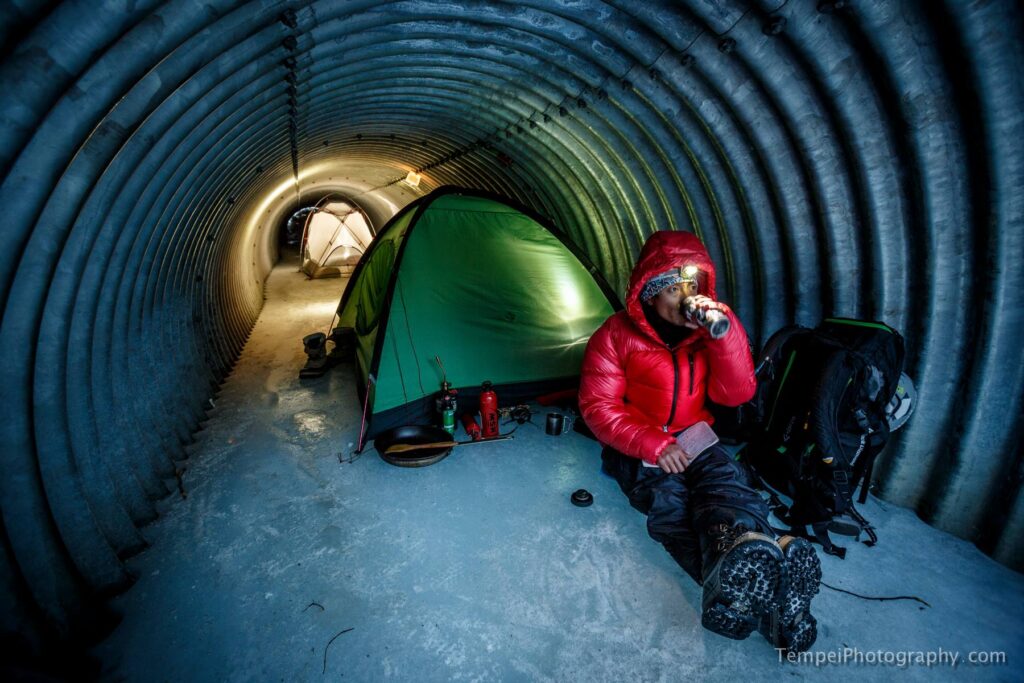
I’m going to be writing a series of travel articles here. Nice to meet you!So let me tell you a little about myself.
Riki Nakajima
I am often asked, “What do you do? I’m always wondering how to explain it but my title is a professional skier.As a professional skier, I ski mountains all over the world, both in Japan and abroad, and express my experiences through videos, photos, and events.As a representative of RIKI JAPOW GUIDE, I give skiing lessons and guide in various places, while using Tomamu ski resort in Hokkaido as my base in winter.
Every spring, I move to the Kanto area to organize, coordinate, and MC outdoor sports and music events, and also do mountain guiding, surf lessons, and a little modeling. I have a wide range of activities.My life is like a journey, moving from event to event, guide tour to guide tour. In this series of articles, I would like to introduce you to the beautiful scenery, people, and fun friends that I encounter in my daily life.
In April, I finished my activities based in Hokkaido and had to pack up all my stuff and make a big trip by car. But it would be a shame to just skip everything and go straight home to Kanagawa. I always go south slowly, traveling from place to place, and enjoy the road to my home after a long time.
But this corona disaster. It’s not going to be business as usual. So I decided to go to Hokkaido, the 47th most densely populated prefecture in Japan. In other words, we decided to go to a place with the lowest population density where I could secure an even more overwhelming social distancing. My destination was Cape Nosappu, the easternmost point of Hokkaido, which I had never visited before. I will visit the remaining sanctuary in the east of Hokkaido.
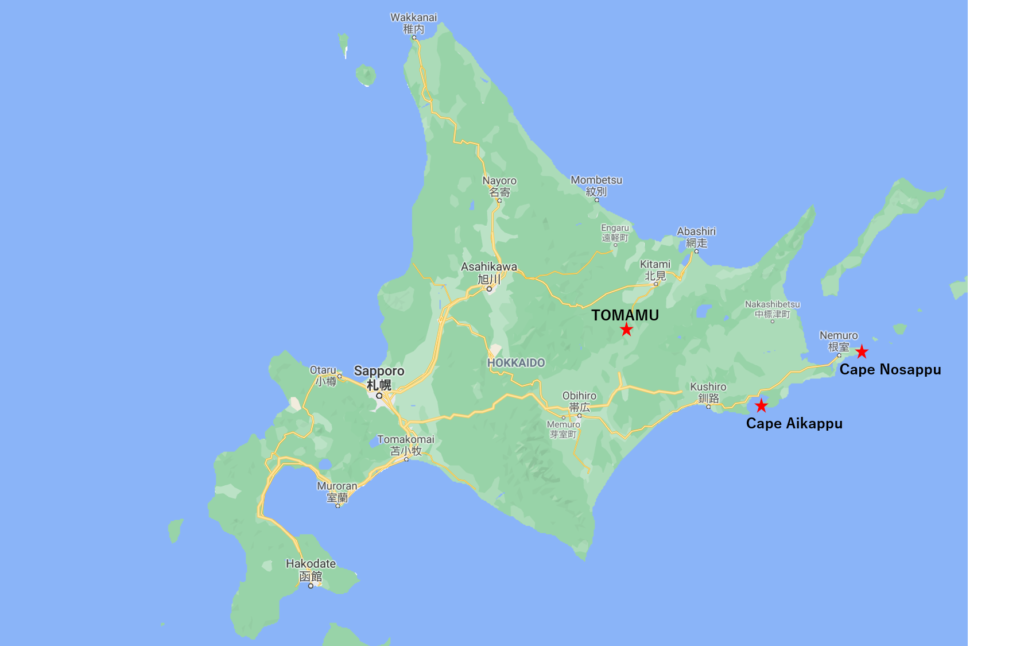
This is a record of that time. But the original best season for this area is said to be June to August, which is just around the corner. It’s a great place to visit in the coming season. So I will introduce it here.
Although it may be because of the corona pandemic, I would definitely recommend sightseeing in Hokkaido by car. There are a lot of places you can’t go by public transportation, and you can see the true face of Hokkaido in those places that are less touristy. In addition, my car has a “bed” in the back, so I can stay in the car overnight. So the only time I see people is when I’m having a meal or taking a bath in an onsen. Thankfully, these days, you can fill up your car by yourself without any contact with anyone.
Here we are at the beginning of my annual closing trip of the snow season.
First, I moved from my base in Tomamu to Kushiro on April 3.
On the 4th, it was raining.
Still, I went to Mt.Ioh in the town of Teshikaga.
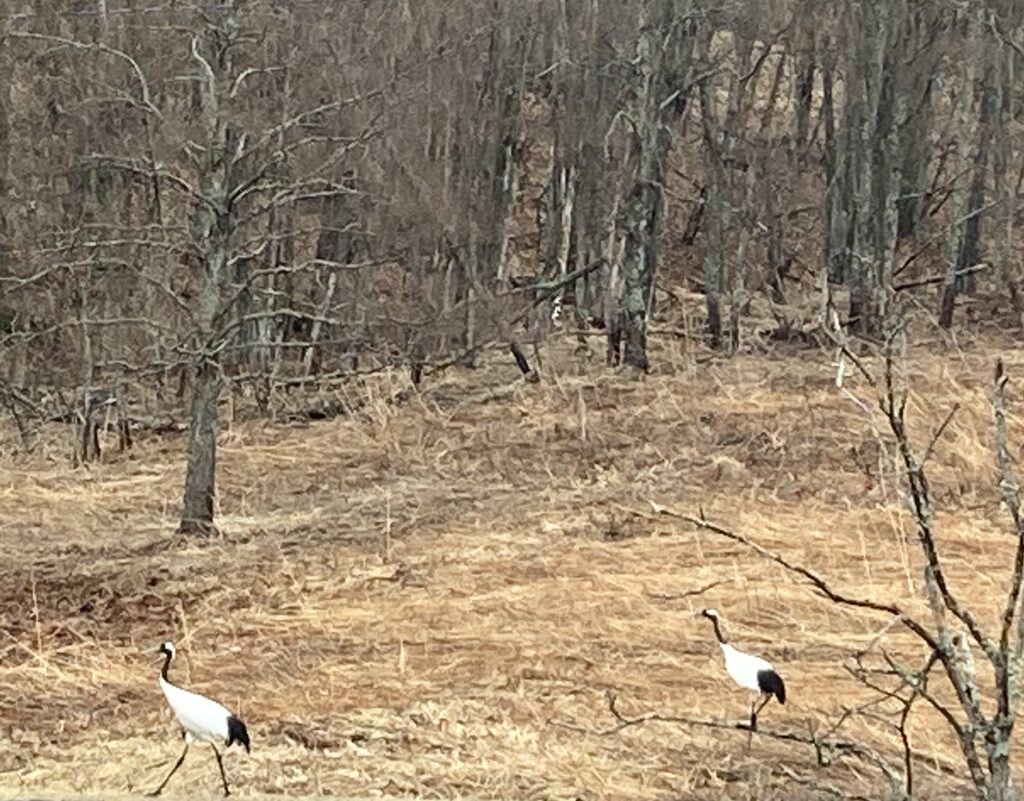
And about an hour and a half from Kushiro.
How long has it been? It’s been a while since I’ve been to Mt. Ioh the Ainu language, it means “Atosanupuri,” meaning “naked mountain.
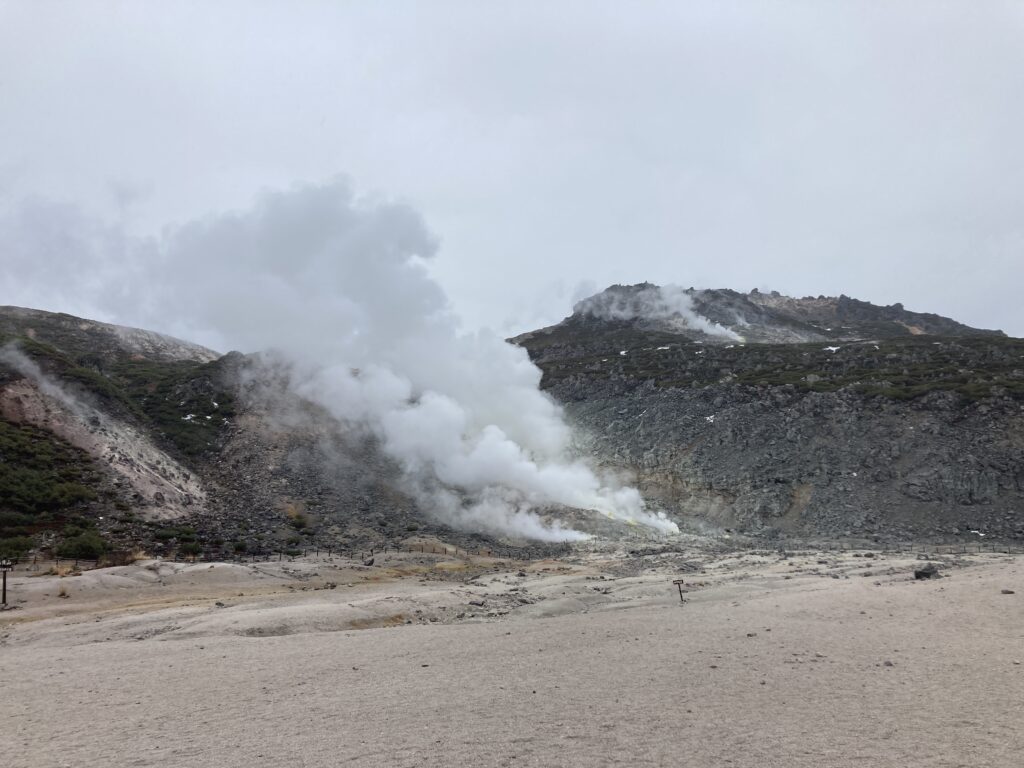
a lot of steam coming from the sulfur spewed from the mountain, the scenery is very impressive!
Not far from there is a store that specializes in homemade ice cream made from milk fresh from the cow, “Cream Dowa”. After eating an ice cream, I headed to Lake Mashu which is the Ainu word for “Kamuito,” the lake of the gods.”
Lake Mashu is often shrouded in fog, and is known as “Foggy Mashu”.
On a day like this, there’s no doubt…
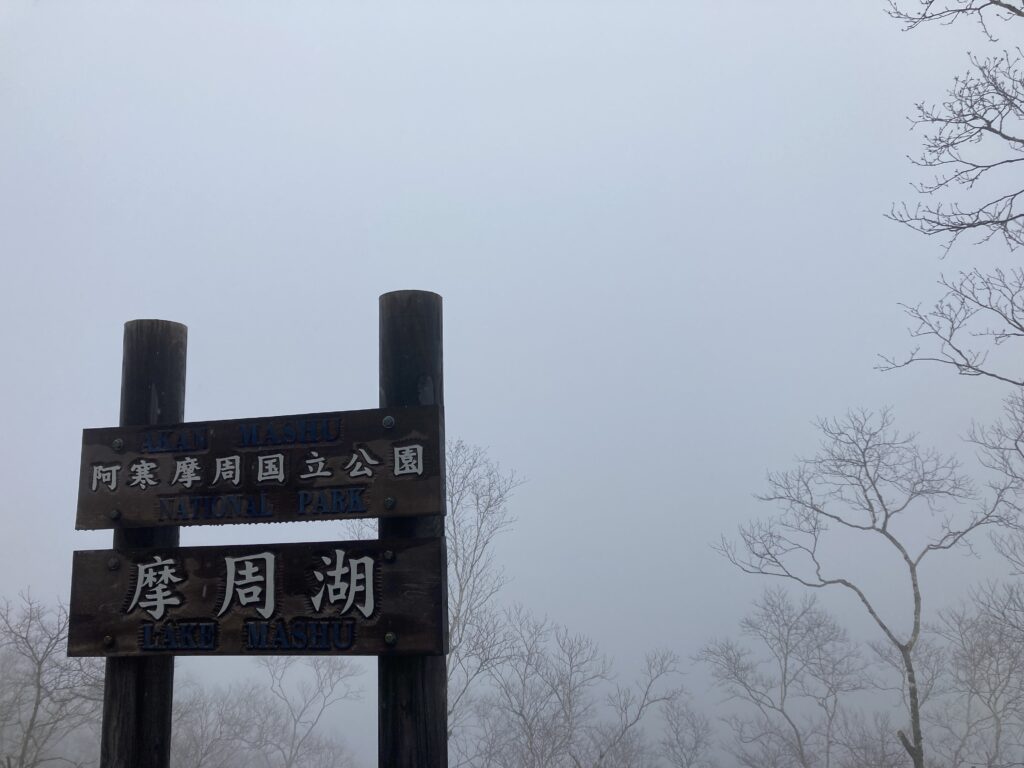
I know, right? lol
It’s all white! lol
The last time I saw this place, it was clear and cloudless. Maybe this is more like Lake Mashu?
Then I returned to Kushiro and wandered around Kushiro City. Of course, while I was on the move, I made sure to check out the nearby surf spots.
I moved on to the next town, where I washed down some delicious “oyster tempura soba” with oysters from Akkeshi.
I didn’t expect it to be oyster tempura, but instead it was oyster and shrimp tempura, but it definitely tasted good! The store’s appearance is also very nice.
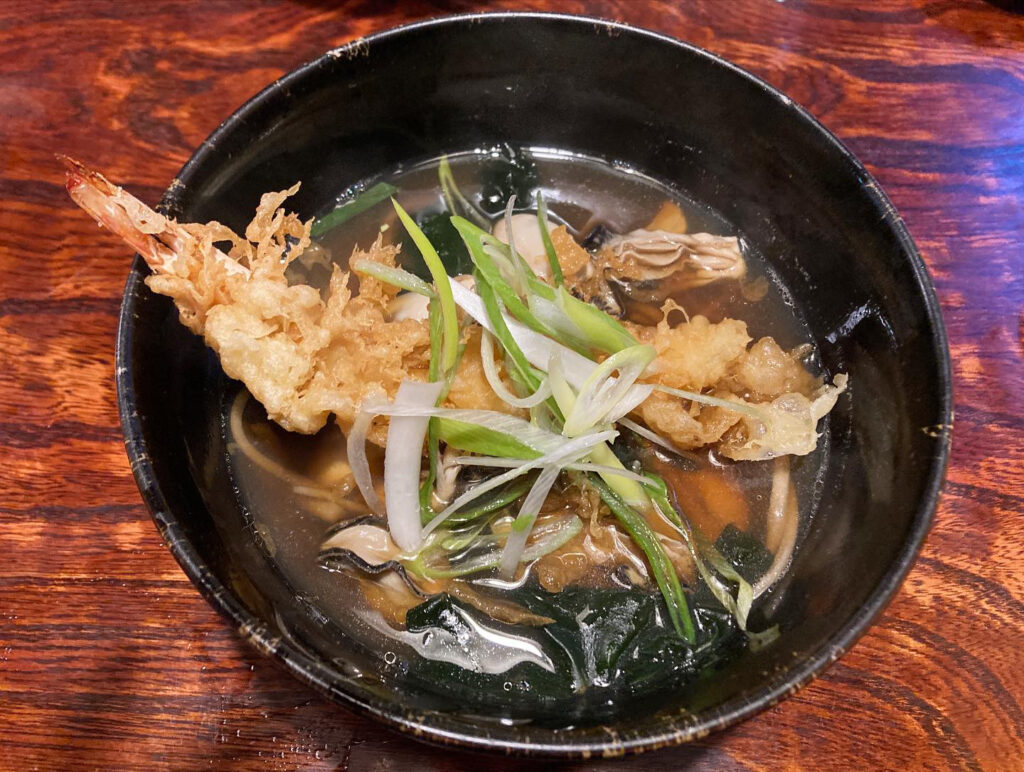
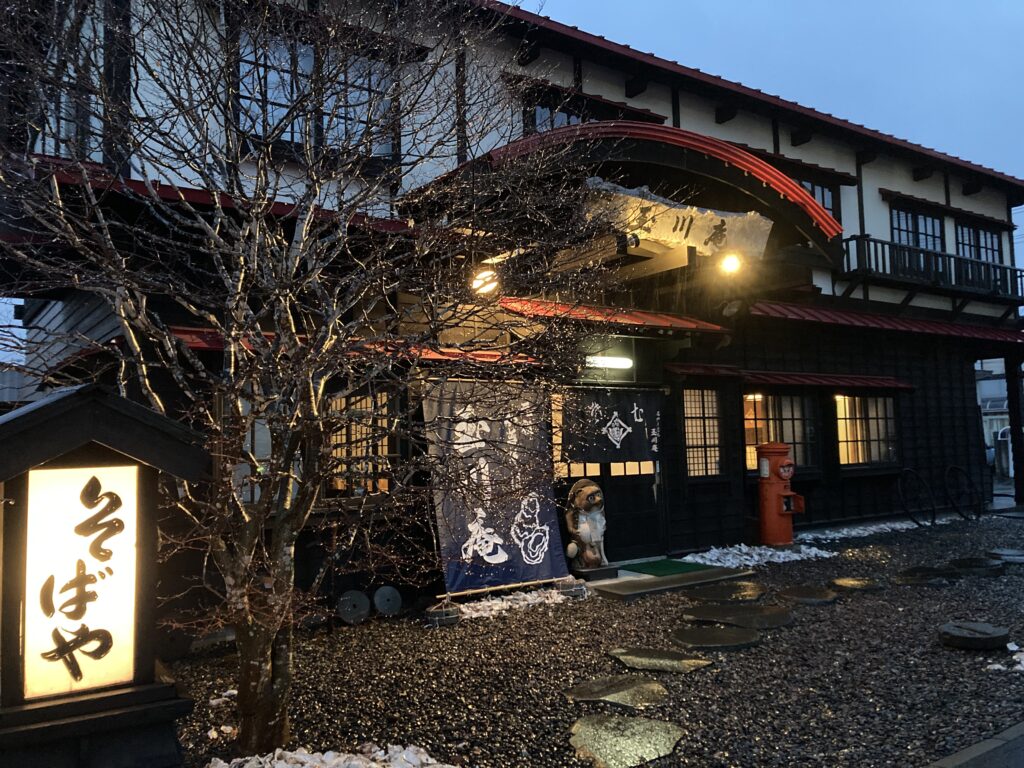
Once everything was filled, the day was over.
5th, heading east in the morning.
It was already April, but it seemed to have snowed during the night, and the area was covered with a light dusting of snow.
I headed for Cape Akkeshi, about 55 km east of Kushiro, looking out over the bay where the oysters I ate yesterday were grown.
I thought, “Who would be here at this time of the day,” but then I saw the deer!
Such a time is paradise for them. At first, I spotted them in the forest and walked around, observing them gently, but they were everywhere. I mean, too many! lol
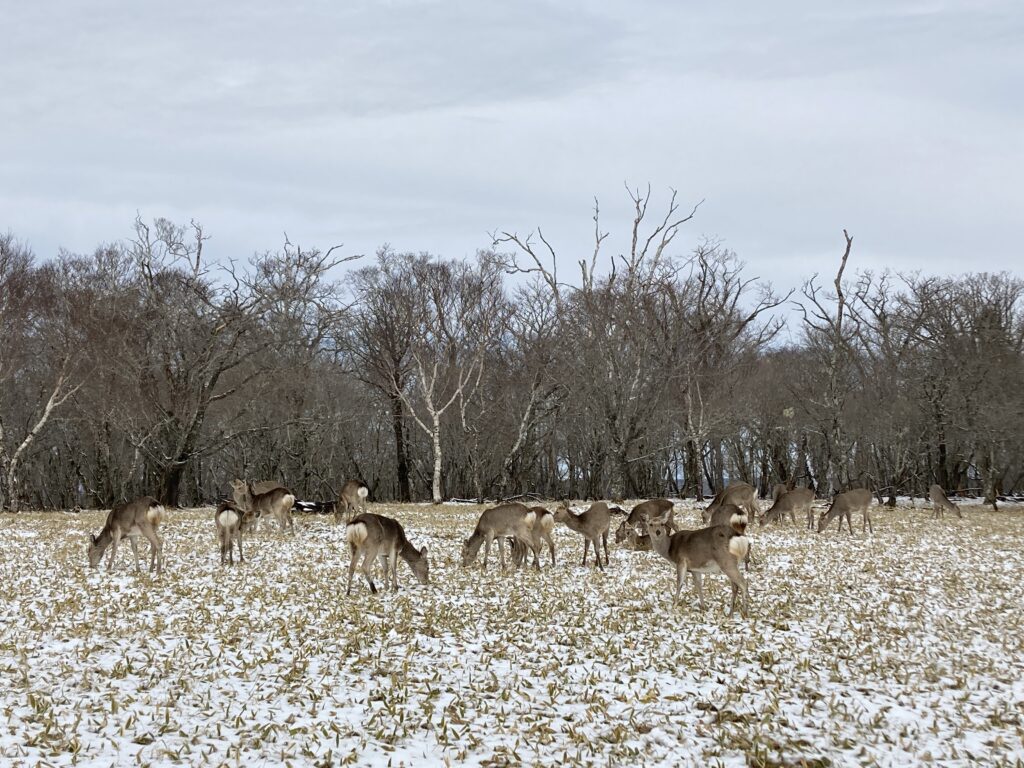
I guess they thought they were outnumbered. They didn’t run away at all. There was no need to walk softly lol
I was alone, so I was a little scared by the number of deer, but I could hear them eating their breakfast and breathing, which made me think, “This is Hokkaido!” It was a wonderful time. Good morning! I said to them gently. I was also able to see a great spotted woodpecker very closely. And of course, the scenery was great.
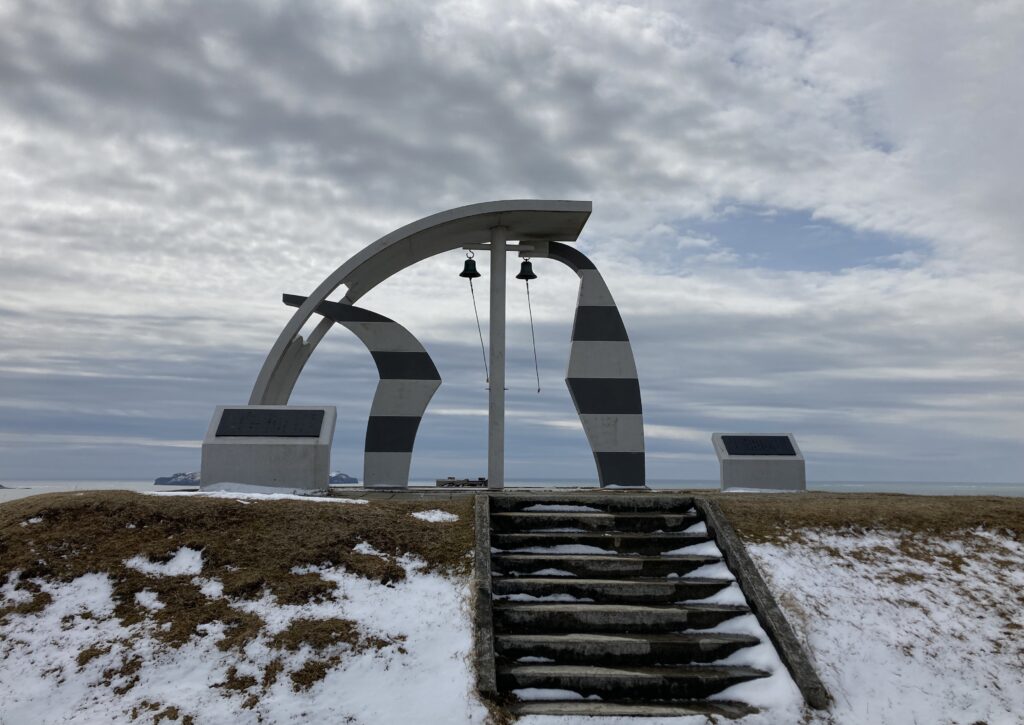
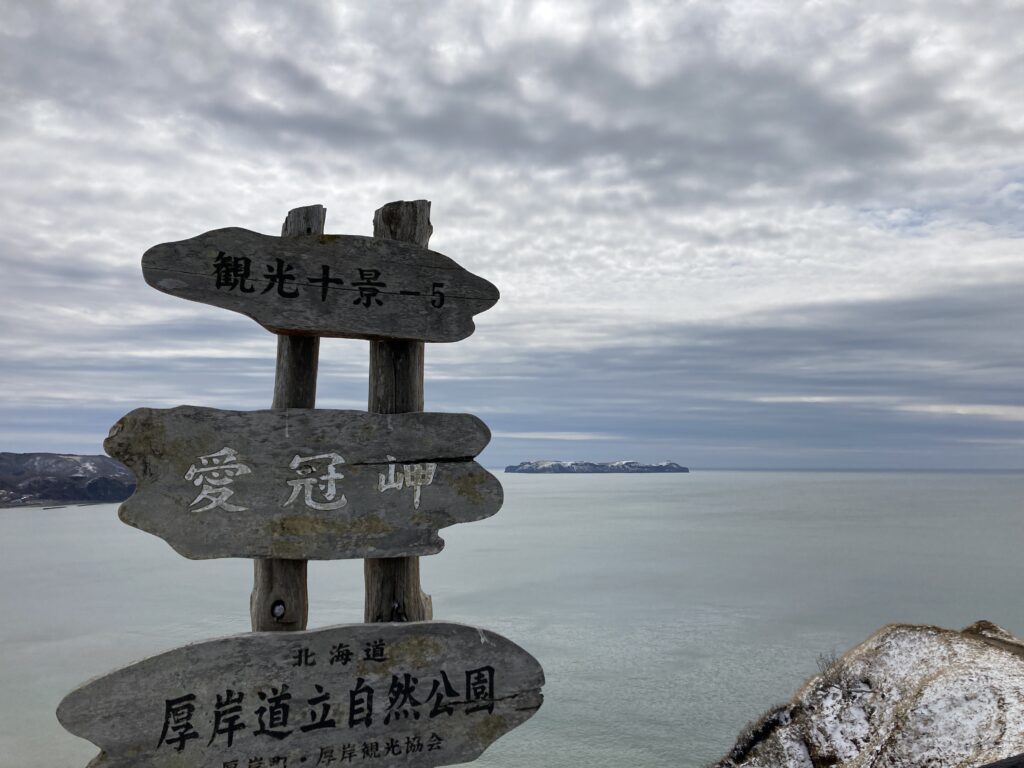
The original name of Cape Aikappu is “Ai-kappu” in the Ainu language, which means “thing on an arrow,” and it has the meaning of “can’t” or “can’t reach” from there. In front of me, there are Daikoku island and Kojima island, famous as seabird breeding grounds.

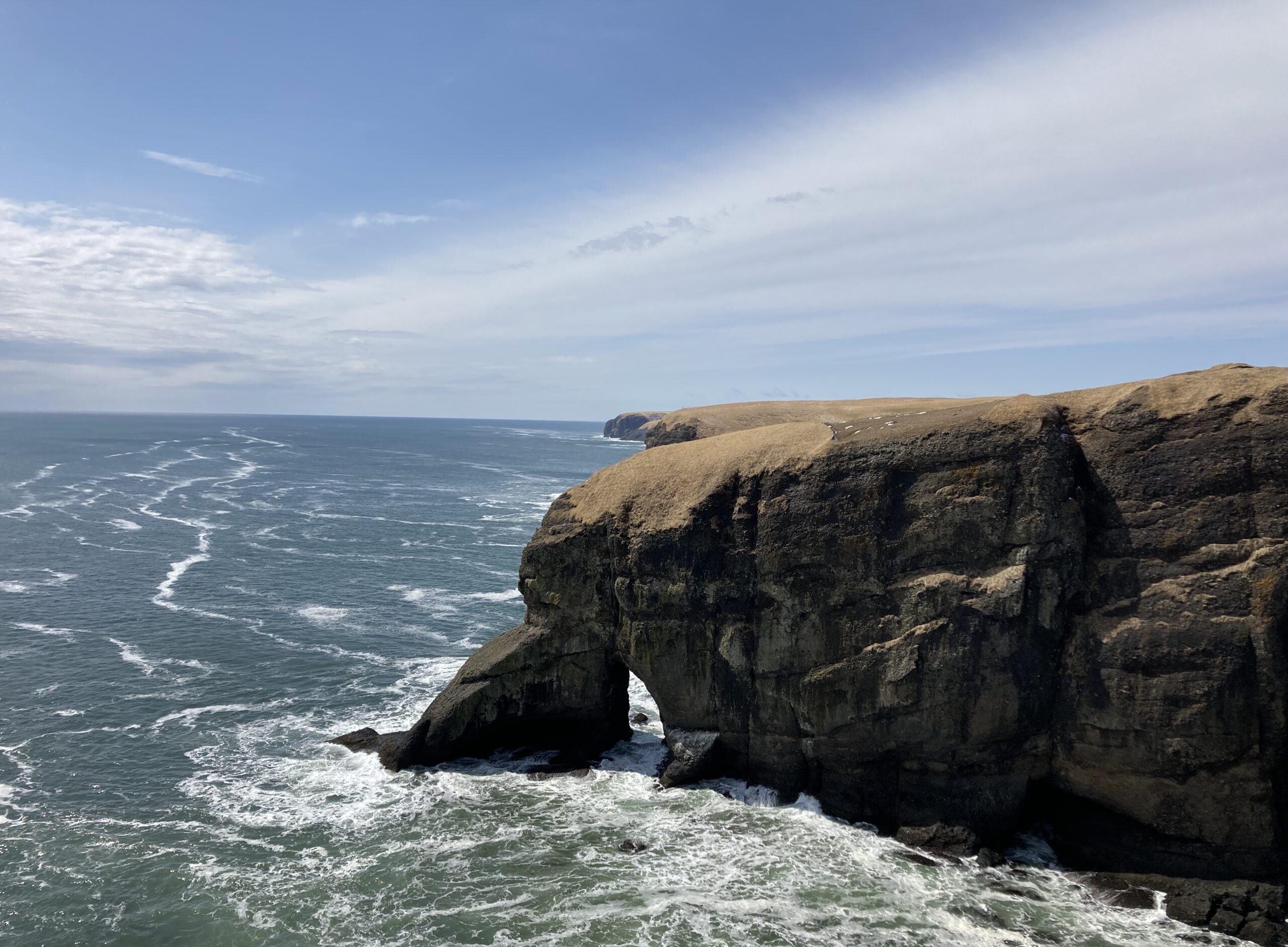
About 30 km east of there, I stopped at Namida Cape and Tachiiwa. “Tachiiwa” is the one that sticks out from the surface of the sea a little farther from the shore of the cape. And at the bottom of the cape, there is a hole called “Namida Cape”. There is a sad legend about this Namida Cape, but now it is just a powerful natural sculpture.
About 10 kilometers further east, from the Biwase Observatory, you can see the Kiri-Tappu Marsh, which is registered as a Ramsar site.
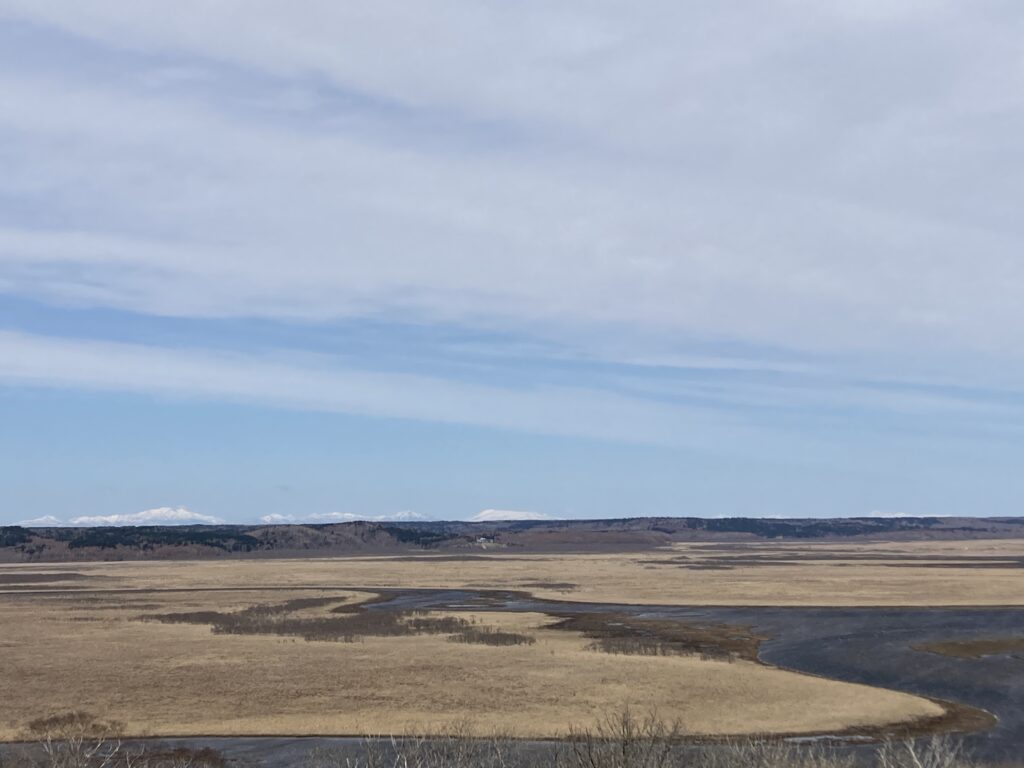
The official name of the Ramsar Convention is the “Convention on Wetlands of International Importance, especially as Waterfowl Habitat,” and 13 of the 52 registered wetlands in Japan are in Hokkaido. Can you see the pure white peaks at the back of this wetland? The Shiretoko mountain range is getting closer.
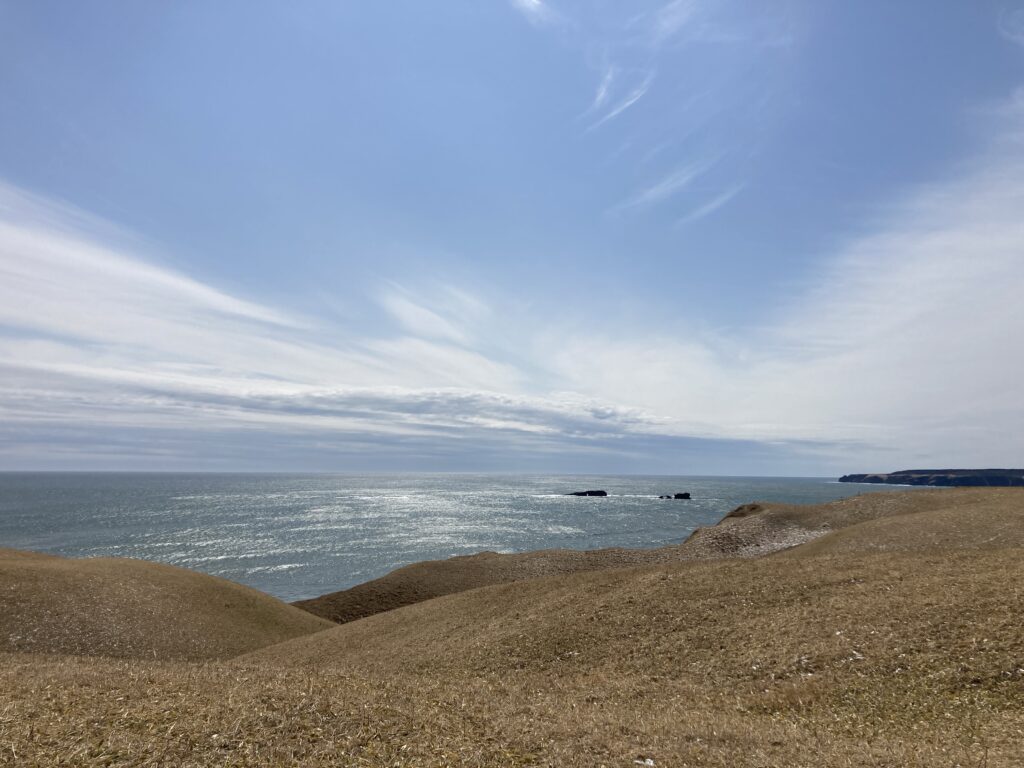
And if you look back, you will see the Pacific Ocean. This vast marshland pours plenty of nutrients into the sea, so it is blessed with marine products. “The forest is truly a lover of the sea.”
Oh, this feeling of nothingness. I love it.
Everywhere you go in Japan, there is always something artificial.
But there is a real “nothingness” in the east of Hokkaido.
It is one of the few true last frontiers left in Japan.
While looking at Biwase Bay, head further east for about 10 km to Cape Kiritappu.
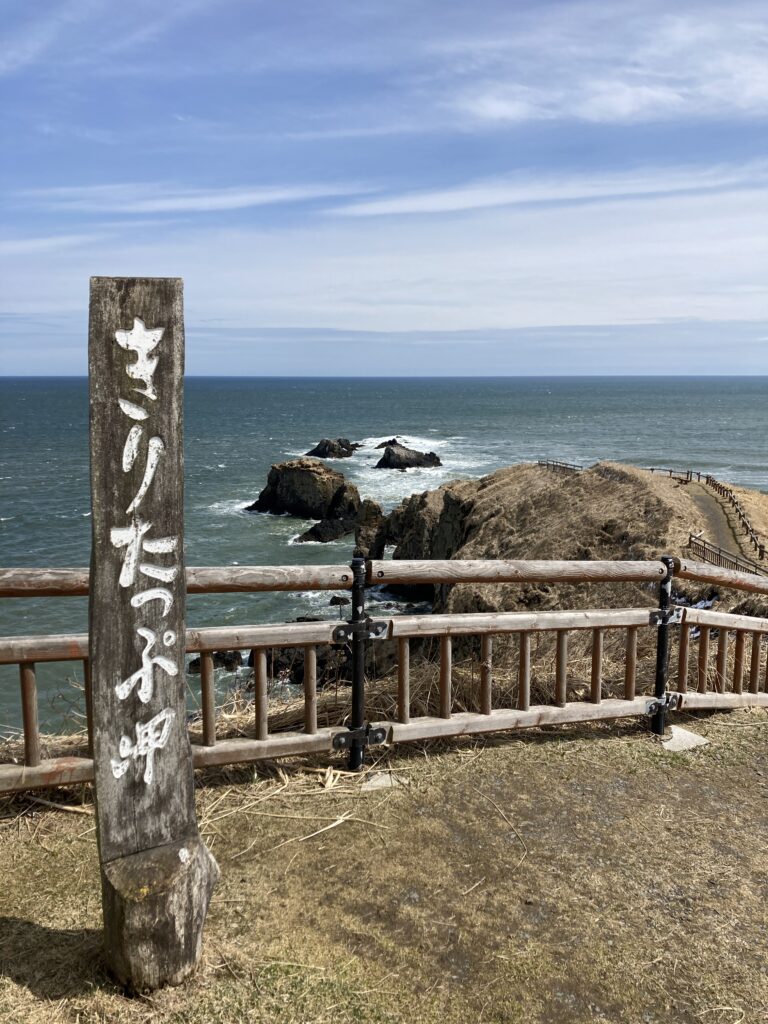
By the way, although it is not well known, the official name is “Cape Tofutsu”.
The name “Cape Kiritappu” is a common name, and the word “kiritappu” comes from the Ainu word “kitapu” (a place to cut the thatch).
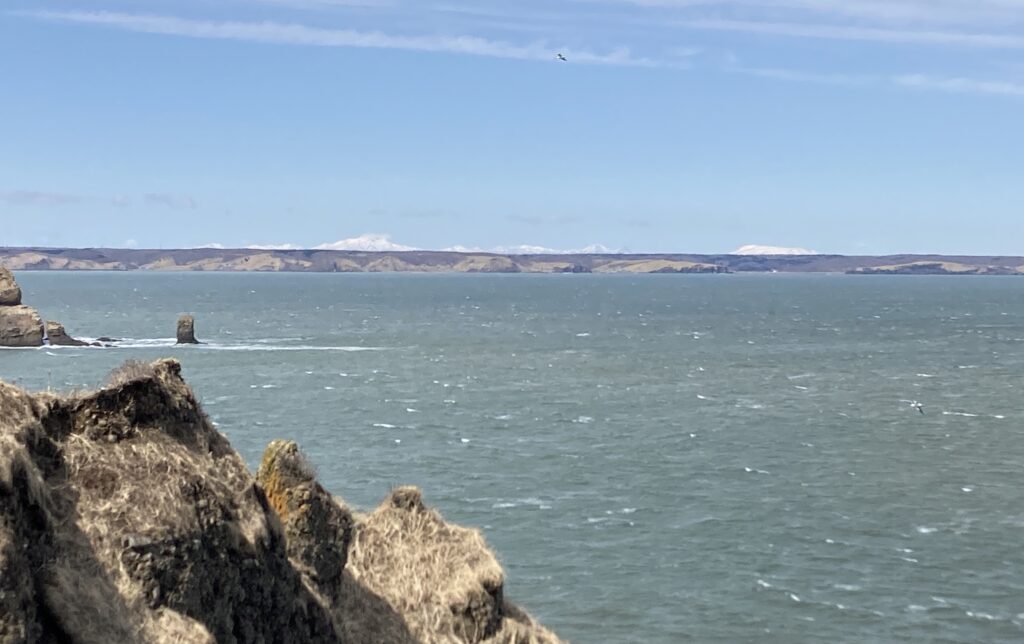
From here you can also see the white peaks of the Shiretoko mountain range, which sits on the Shiretoko peninsula further inland from the Nemuro peninsula. Beautiful!
From there, it is about 90 km east along the Pacific Ocean.
Finally, we arrived at our destination, the easternmost point of Hokkaido, Cape Nosappu! This is the easternmost cape on the mainland, and its name comes from the Ainu word “Nok Sam”(meaning “by the cape”) .
From here, Kunashiri Island, the Northern Territories, is right in front of us, and there is a huge monument in the square nearby. It was very windy and too cold, so I escaped to the nearby Northern Territories Museum, which was free to enter.
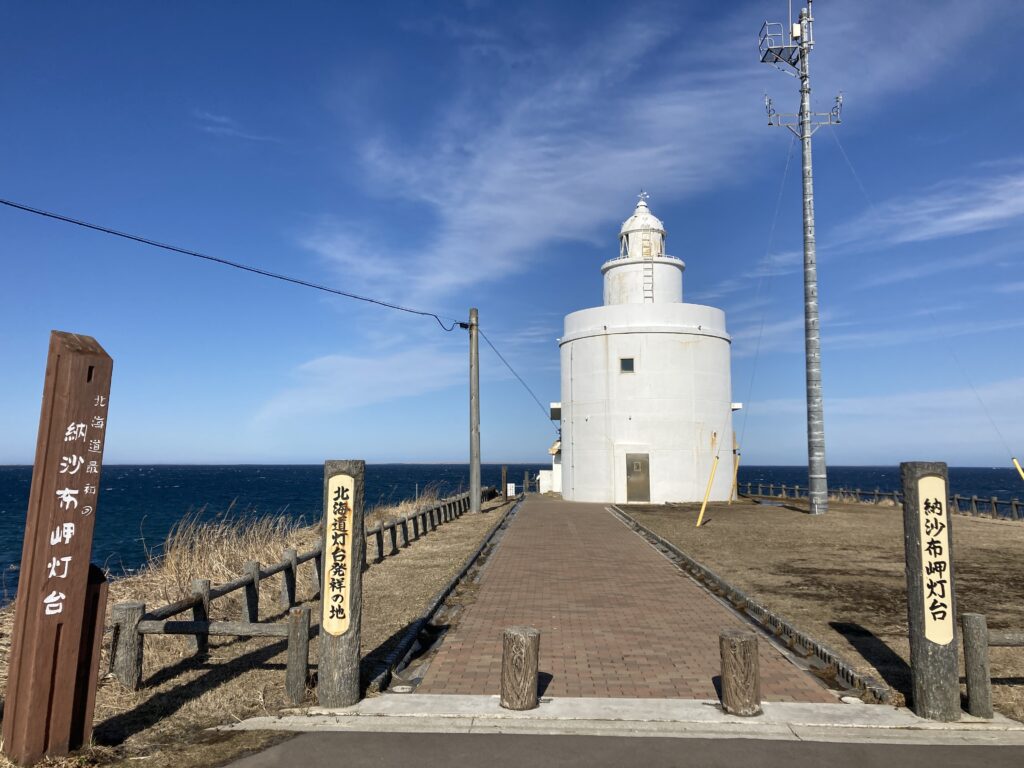
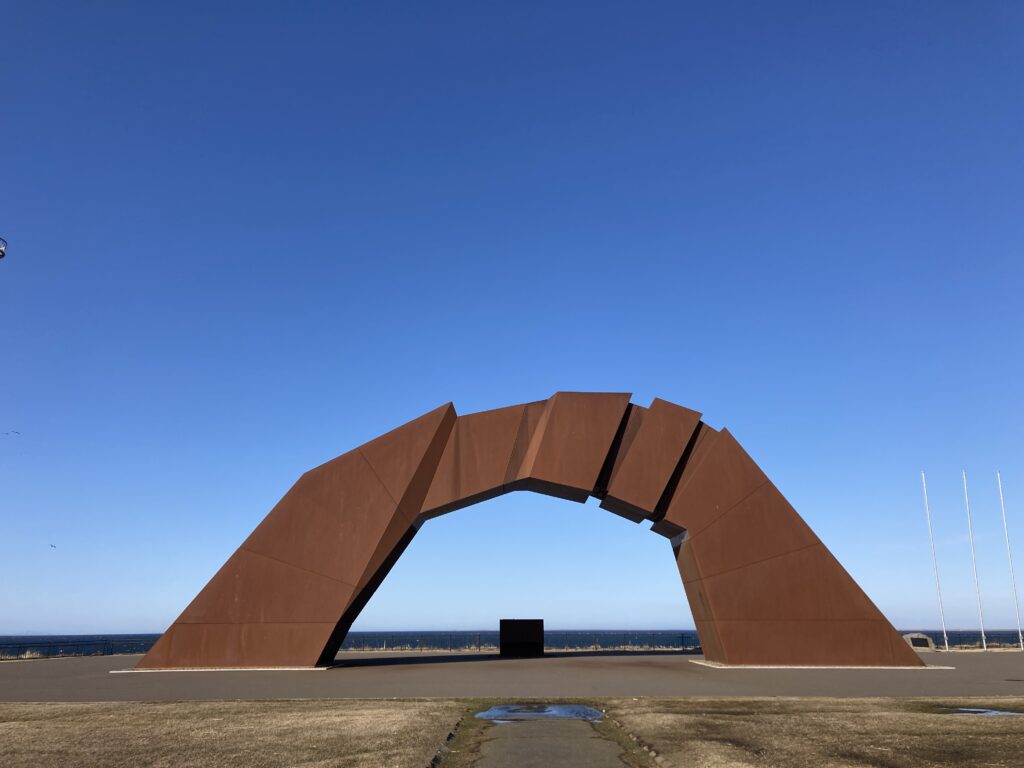
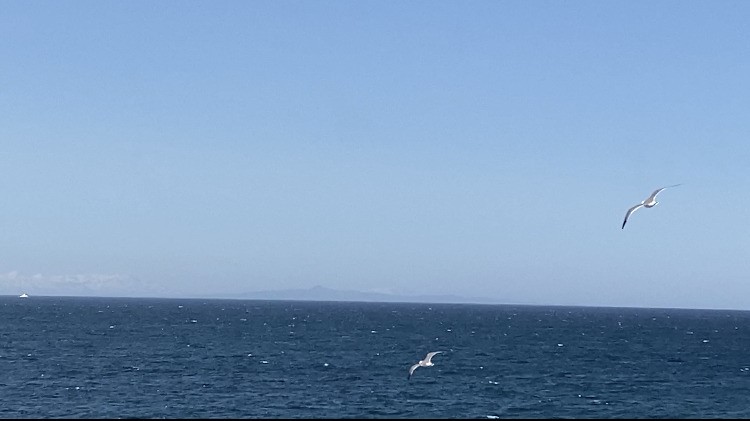
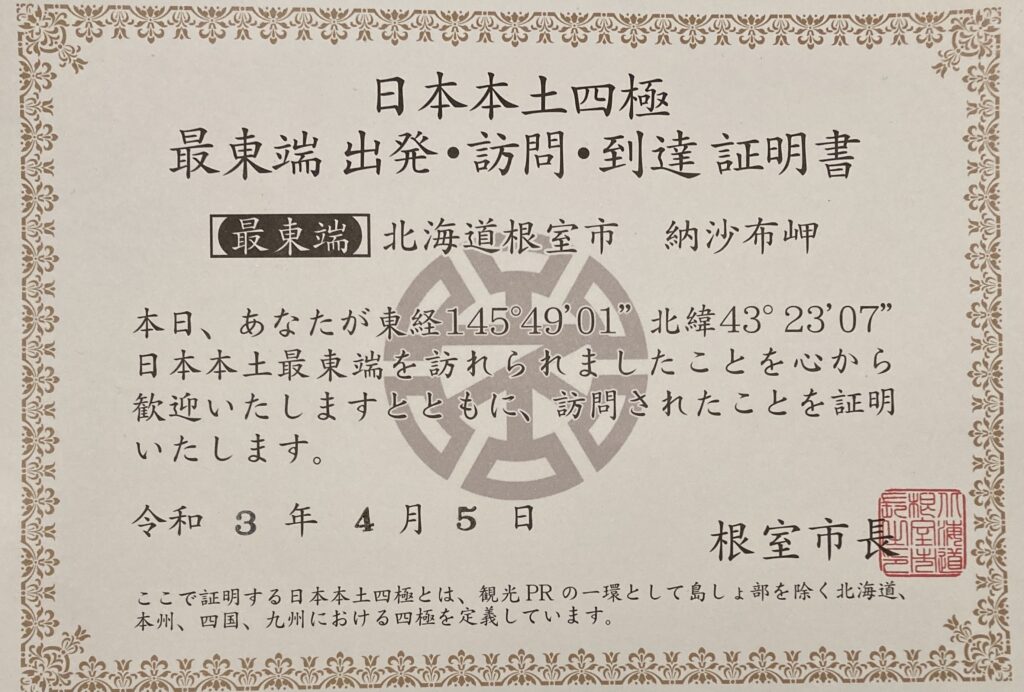
Now that we’ve reached the far east, we’ll drive west along the Nemuro Bay side, which is not on the Pacific Ocean side.
There’s nothing.
Look to the south, look to the north.
Only the Shiretoko mountain range of the Shiretoko Peninsula is clearly visible.
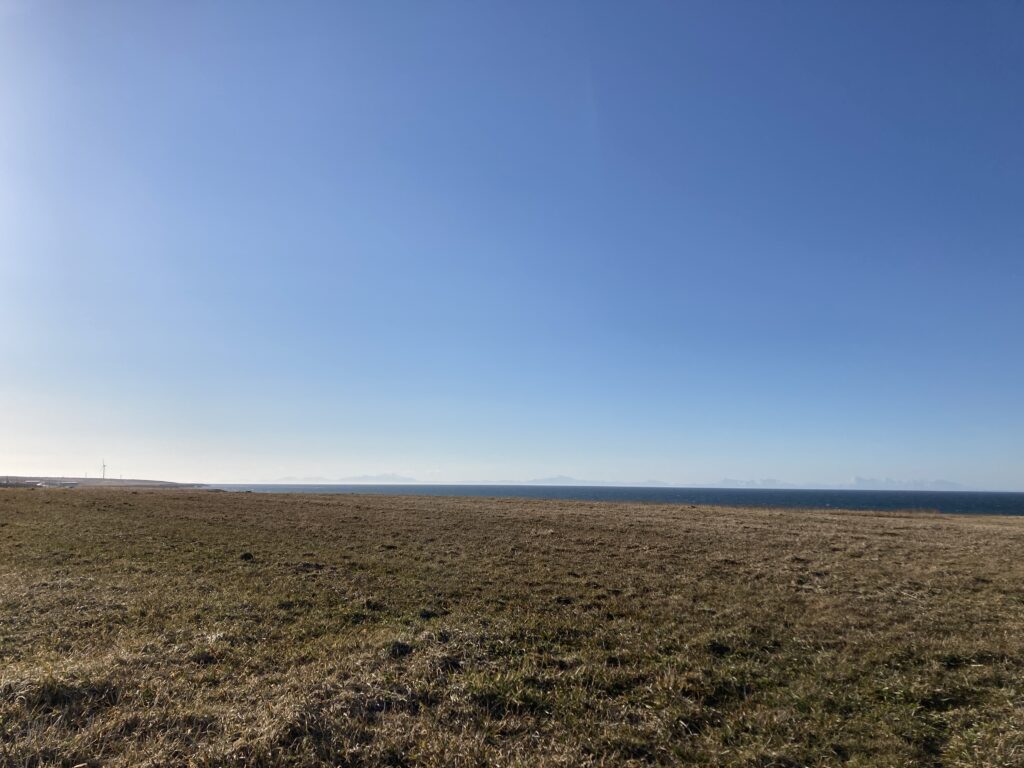
Photos can’t convey the beauty.
What a beauty.
And about 10km from Cape Nosappu, there is the Northern Primeval Flower Garden. It will probably become a flower garden when it gets a little warmer. There is only a fence, so anyone can enter for free. There are ponies roaming free.
The soft light of the slanting sun, the sound of the wind, the sound of ponies munching on grass. That’s it… It’s as if another time is flowing there. But this is the real time. I was able to touch the ponies, and I patted the ones that came close to me.
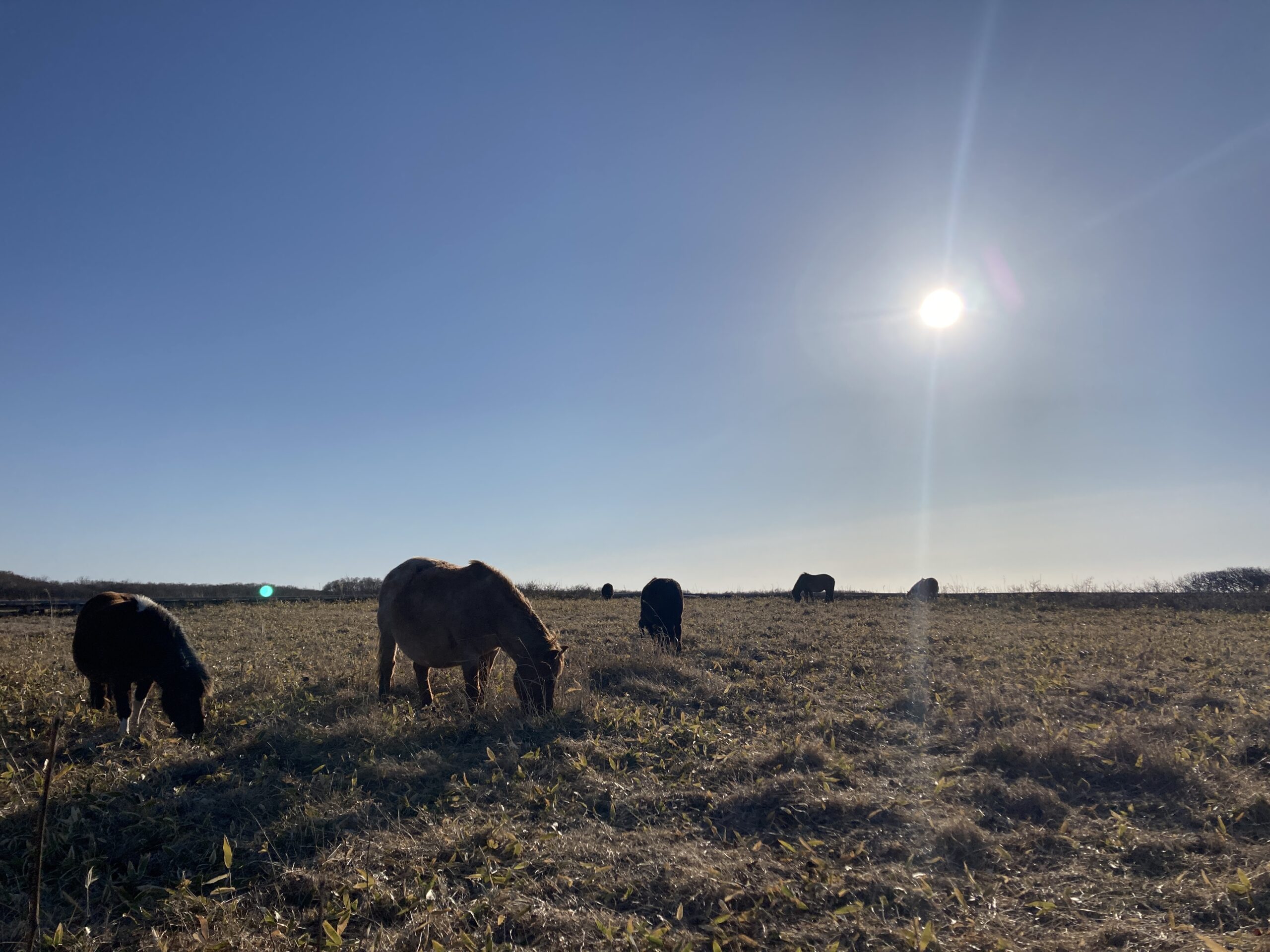
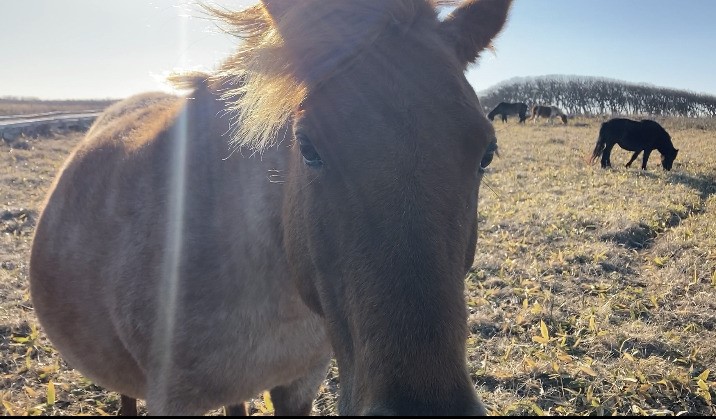
It’s so nice… But the sun was setting and the wind was blowing hard, so it was pretty cold. I wanted to stay longer, but I gave in to the cold and went back to the car. Then the sun was getting lower and lower.
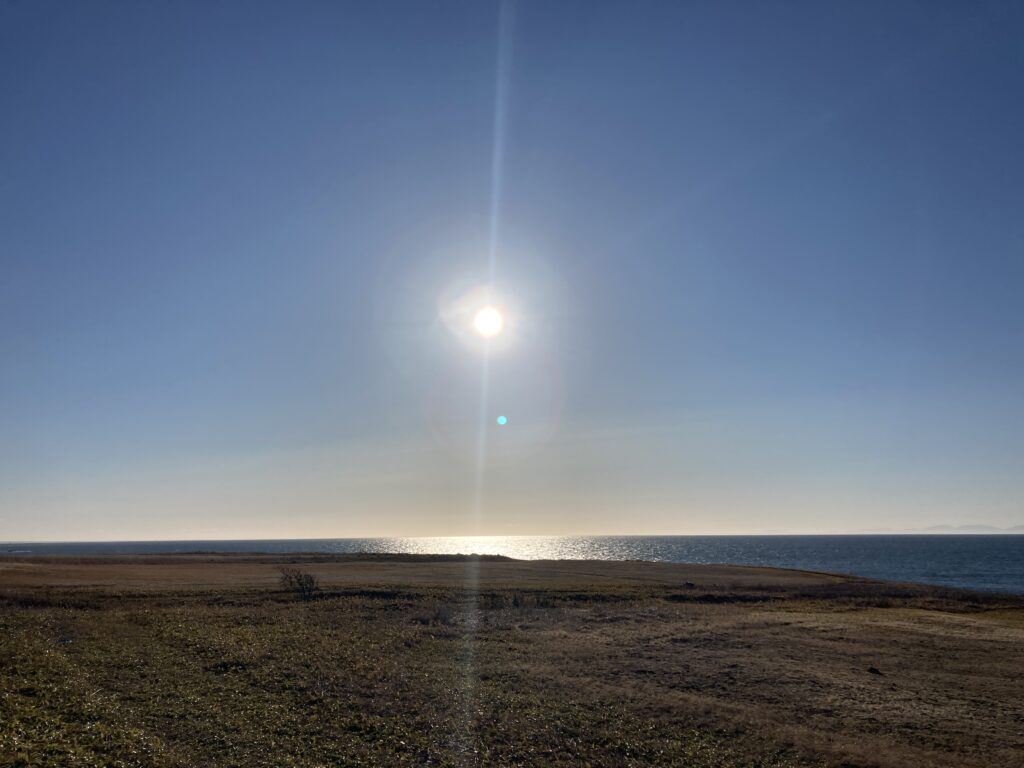
I’m sure that from here, I can see everything perfectly, with nothing in the way, as the sun rises from the horizon and sets into the horizon….
I’d like to lie here all day when it’s a bit warmer, take a dip in the ocean once in a while, and just spend time. Someday.
Then, about 15km west of there.
Nemuro City. I was planning to stay here tonight, but there was still time, so I went south about 6.5km to Cape Hanasaki, where there was a natural monument, Nemuro Kurumaishi, which I had missed on the Pacific side. There are almost no traffic lights in East Hokkaido. It goes by so fast.
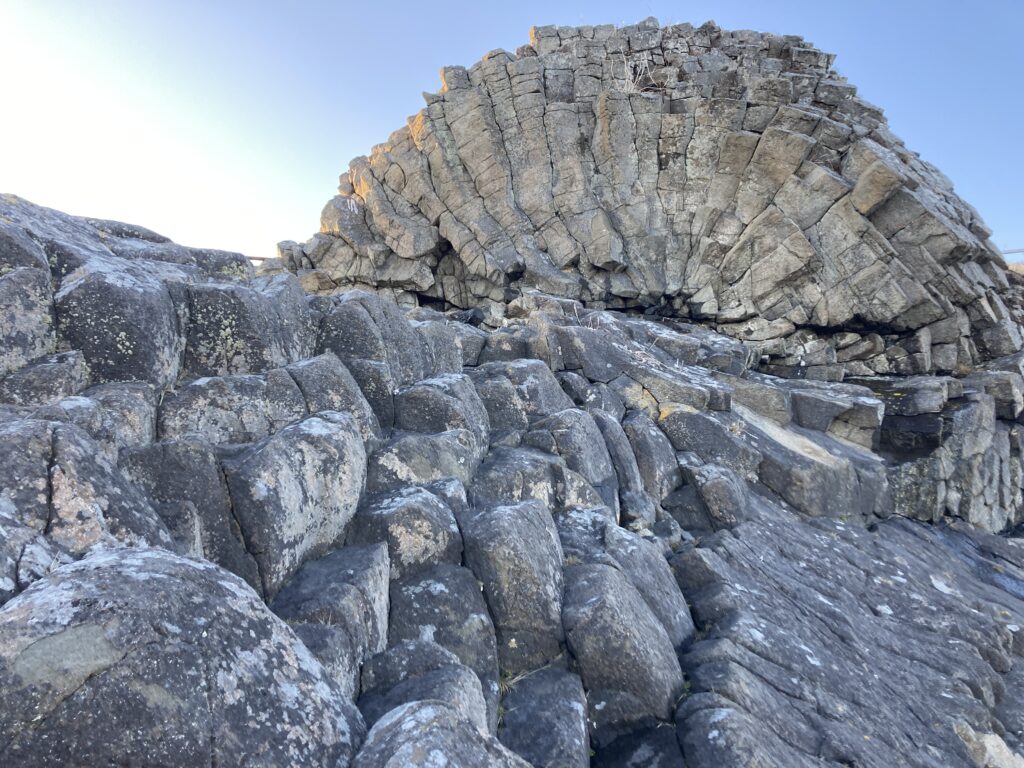
Back in Nemuro City, I decided to have an early dinner.
There weren’t many stores along the way, so I had only eaten a little bit of mountain food since morning. I was starving.
As it was my first time in Nemuro, I chose the Nemuro gourmet dish, Escalope! Escalope, also known as esca for short, is a local dish of Nemuro City, Hokkaido, consisting of buttered rice topped with pork cutlet and doused with demi-glace sauce. Oh. This is it!
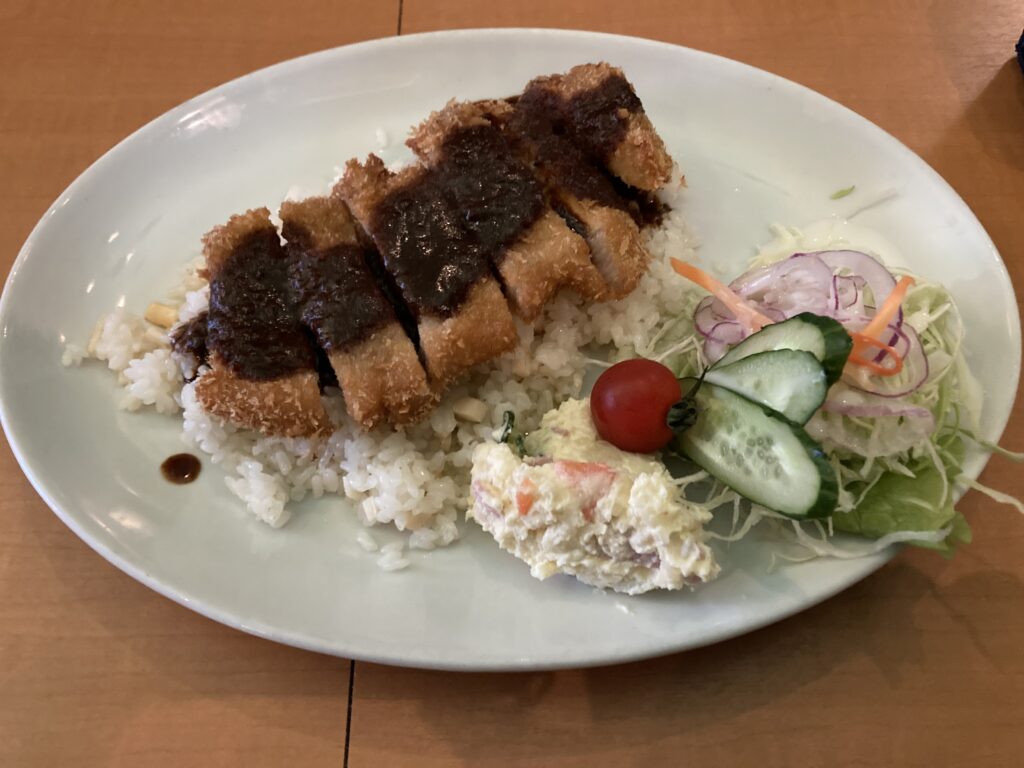
It was more impactful than I imagined, with more butter dripping from the butter rice, but it sure was perfectly good!
Then, I walked around the area for a while, and watched the beautiful sunset over the Shiretoko mountain range, and my travel partner, the car, was also dyed by the sunset.
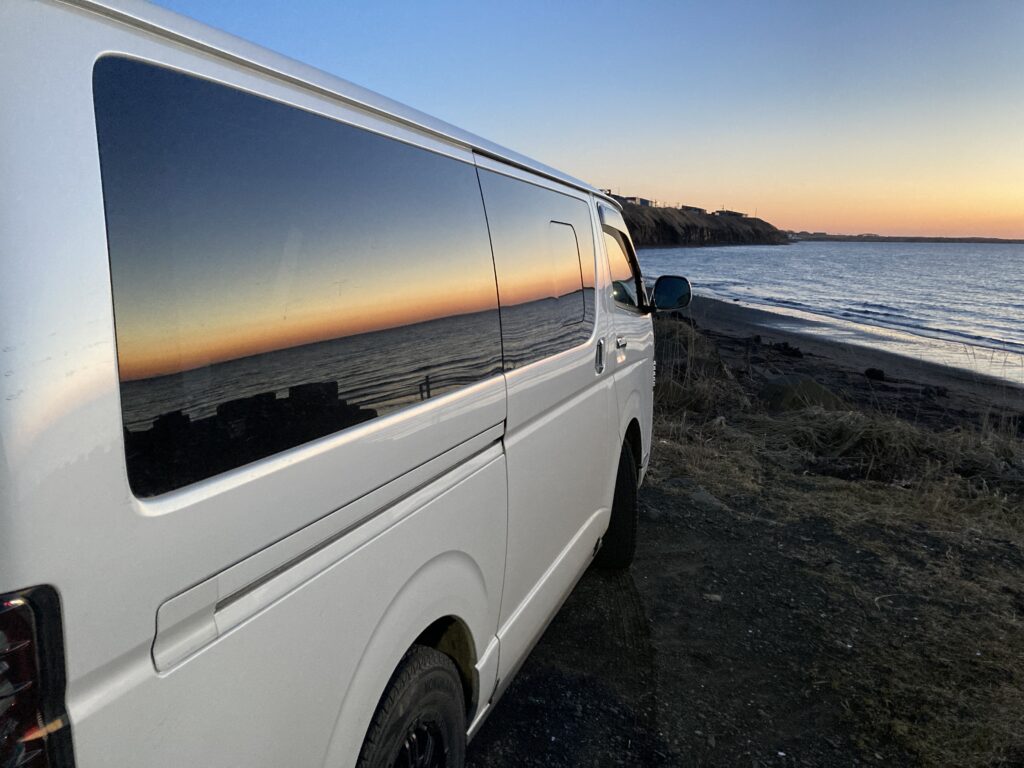
As the night falls, I go to bed.
My travel rule is not to take any action after dark in order to enjoy the scenery to the fullest.
And yet, this planet we live on is unbelievably beautiful!

Riki Nakajima
Blog:https://ameblo.jp/rikistyle/
Instagram:https://www.instagram.com/rikinakajima/
Guide Company HP for Winter :https://rikijg.com/jp/
Guide Company HP for Green Season :https://www.rikijapowguide.com
Born in Shiga Prefecture in 1981. While studying in Whistler, Canada, he became a certified CSIA instructor and the first Japanese freeski instructor to receive the CFSA freeski instructor certification. After returning to Japan, he expanded his activities to include backcountry skiing in addition to participating in numerous freeskiing competitions. For the past few years, he has been working at Tomamu Ski Resort in Hokkaido, giving ski lessons, guiding, managing events, and acting as an MC. He also travels abroad every spring to try his hand at high adventure mountain climbing, and expresses his experiences through videos, photos, and events. He is the representative of the guide company “RIKI JAPOW GUIDE”.